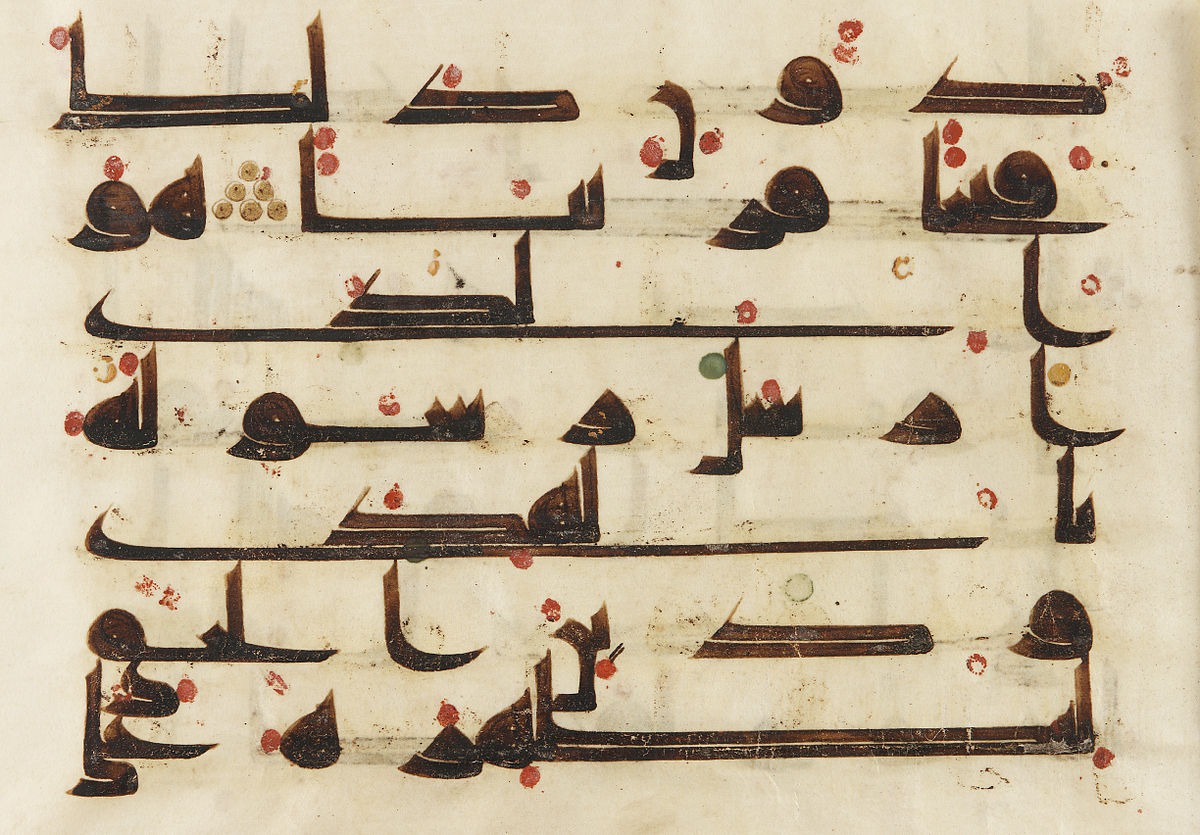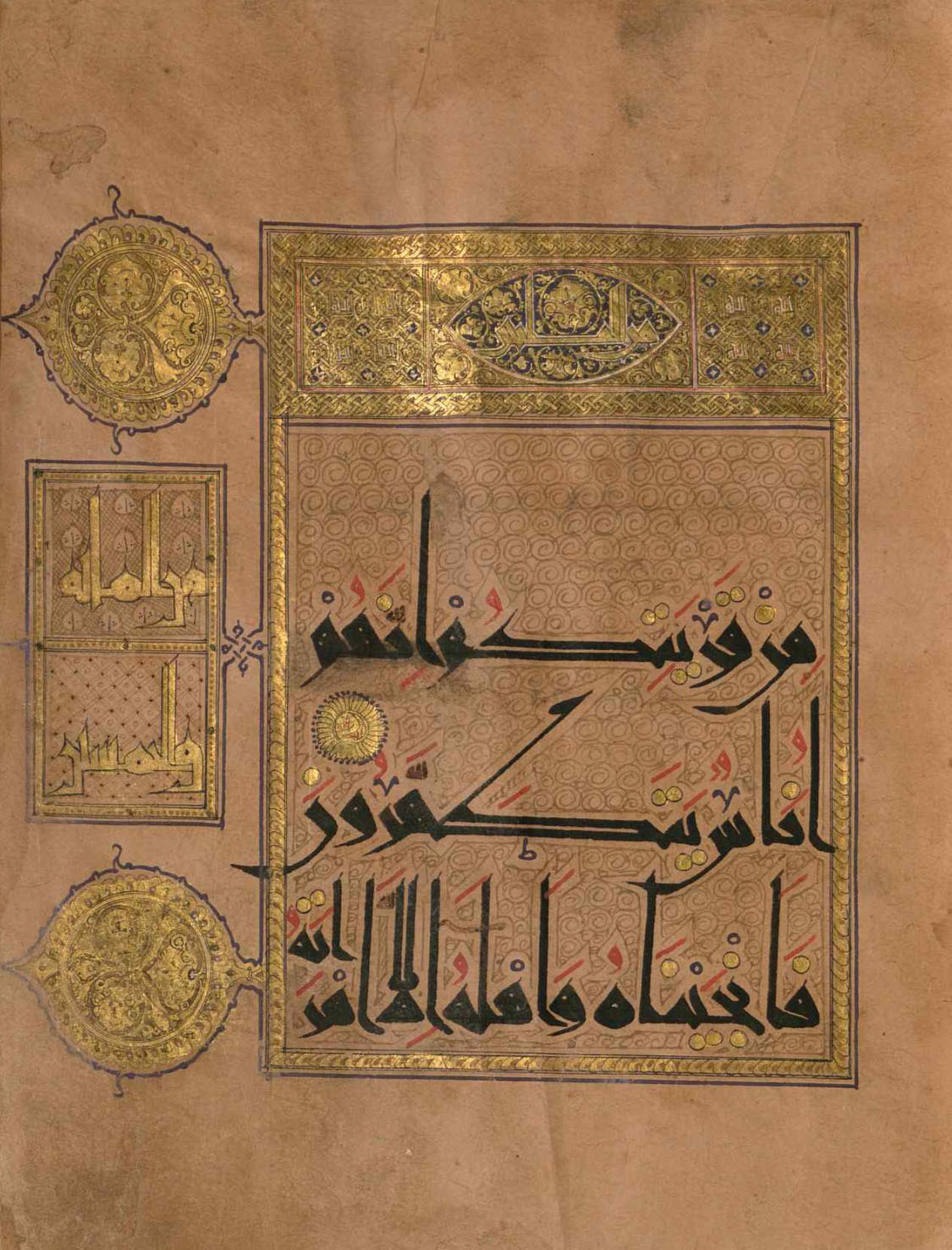Kufi Script
Kufic style is a highly decorative and angular form of Arabic calligraphy that is noted for its distinct geometric shapes and sharp angles.
Kufic is characterized by its straight, horizontal lines, vertical uprights, and angular forms. Unlike other more flowing Arabic scripts, Kufic is quite rigid and structured, which gives it a striking, bold appearance. It often features elongated characters and can include intricate patterns and ornamentation. This style is most commonly seen in the earliest manuscripts of the Quran, inscriptions on coins, and architectural decorations.
1. Early Beginnings:Kufic calligraphy originated around the 7th century CE in the city of Kufa, located in modern day Iraq, evolving from ‘Hijazi’ script used in Makkah and Madinah in early days of Islam. It was one of the earliest scripts used to record the Quran.
2. Spread and Influence:As Islam spread throughout the Arabian Peninsula and beyond, so did the use of the Kufic script. It was adopted for a wide range of uses, from religious texts and coins to monumental inscriptions and decorative art.
3. Variations and Evolution:Over the centuries, Kufic developed several variations, including the foliated Kufic, which incorporates plant-like embellishments, and the square Kufic, often used in architectural decorations. These variations allowed for a greater level of artistic expression and adaptability to different surfaces and materials.
4. Decline and Legacy:By the 12th century, the use of Kufic script in everyday writing and religious manuscripts declined, giving way to more cursive scripts like Naskh and Thuluth. However, Kufic never disappeared completely and continued to be used in decorative arts and architecture, influencing Islamic art well into the modern era.
5. Modern Revival:Today, Kufic script enjoys a revival as artists and designers explore its aesthetic qualities in modern art and design. Its timeless appeal and geometric beauty continue to inspire creative works across various media.
Kufic style Arabic calligraphy stands as a testament to the artistic and cultural achievements of the Islamic world, bridging the past with the present through its unique and enduring form.

A folio from a 8th century Quran


11th century Quran in Eastern Kufic script
